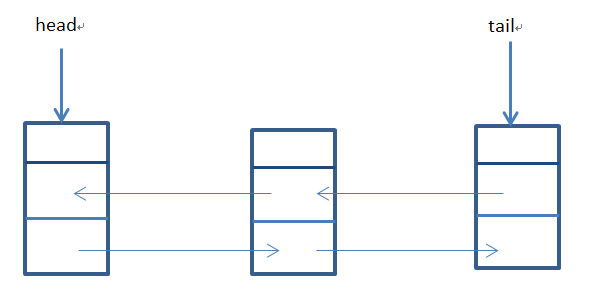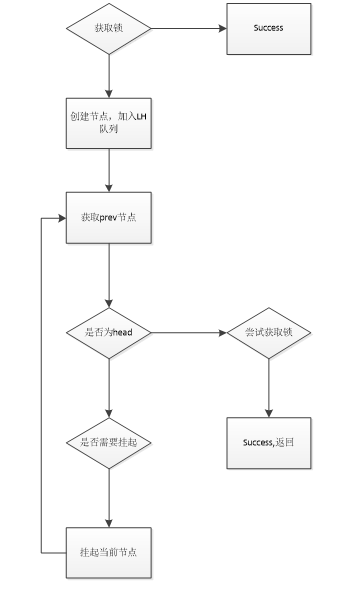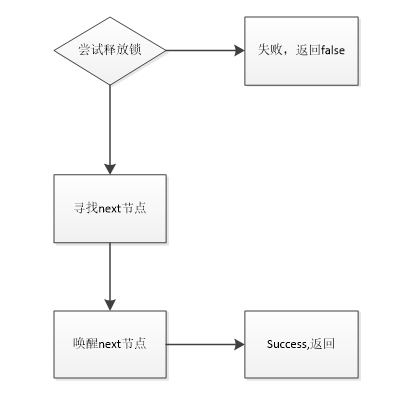AbstractQueuedSynchronizer是JDK1.5提供的一个基于FIFO等待队列实现,用于实现同步器的基础框架,以下简称AQS。AQS是实现 JCU包中几乎所有的有关锁、多线程并发以及线程同步器等重要组件的基石, 其核心思想是基于volatile int state这样的一个属性同时配合Unsafe工具对其原子性的操作来实现对当前锁的状态进行修改 。
状态管理
AQS使用int来表示状态,同时提供了getState()、setState()、compareAndSetState()方法来获取和修改该值。在互斥锁中它表示着线程是否已经获取了锁,0表示lock不被任何线程占有,1 已获取,大于1 重入数。
private volatile int state;
protected final int getState() {
return state;
}
protected final void setState(int newState) {
state = newState;
}
protected final boolean compareAndSetState(int expect, int update) {
return unsafe.compareAndSwapInt(this, stateOffset, expect, update);
}state使用volatile来保证内存可见性,使用CAS操作compareAndSetState保证写入的原子性,从而保证线程安全性。
节点
AQS中使用node表示CLH队列的节点,源码如下:
static final class Node {
//代表一个节点使用共享模式等待
static final Node SHARED = new Node();
//独占模式
static final Node EXCLUSIVE = null;
//标记一个节点为取消状态
static final int CANCELLED = 1;
//代表当前结点的后继节点需要被唤醒
static final int SIGNAL = -1;
//线程(处在Condition休眠状态)在等待Condition唤醒
static final int CONDITION = -2;
//表示锁的下一次获取可以无条件传播,在共享模式头结点有可能处于这种状态
static final int PROPAGATE = -3;
//线程等待状态
volatile int waitStatus;
//前驱节点指针
volatile Node prev;
//后继节点指针
volatile Node next;
//节点所标记的线程
volatile Thread thread;
//
Node nextWaiter;
//是否共享模式
final boolean isShared() {
return nextWaiter == SHARED;
}
//获取前驱节点
final Node predecessor() throws NullPointerException {
Node p = prev;
if (p == null)
throw new NullPointerException();
else
return p;
}
Node() { // 用于创建初始头节点或共享节点
}
Node(Thread thread, Node mode) { // 用于addWaiter
this.nextWaiter = mode;
this.thread = thread;
}
Node(Thread thread, int waitStatus) { // 用于Condition
this.waitStatus = waitStatus;
this.thread = thread;
}
}CLH队列
AQS内部维护着一个FIFO的CLH队列,相对于原始的CLH队列锁,AQS采用的是一种变种的CLH队列锁:
> 原始CLH使用的locked自旋,而AQS的CLH使用node节点的waitStatus来控制阻塞
> 为了方便处理timeout和cancel操作,每个node维护prev指针来移除cancel的节点,并且这个node节点可以继续使用prev的状态
> head实际为空节点

在AQS维护的CLH队列中,每个Node代表着一个需要获取锁的线程。该Node中有两个常量SHARE、EXCLUSIVE。其中SHARE代表着共享模式拥有锁,EXCLUSIVE代表着独占模式拥有锁。
入队
当线程尝试获取锁的时,如果失败,则需要将该线程加入到CLH队列,入列中的主要流程是:
创建自身节点,如果tail不空,说明当前队列非空,将node的prev指针指向tail,将新的node使用CAS操作添加到队尾,失败则进入enq进行自旋直到成功为止;如果队列为空,直接进入enq初始化链表,然后再将新的node使用CAS操作添加到队尾。
private Node addWaiter(Node mode) {
Node node = new Node(Thread.currentThread(), mode);
Node pred = tail;
if (pred != null) {
node.prev = pred;
if (compareAndSetTail(pred, node)) {
pred.next = node;
return node;
}
}
enq(node);
return node;
}
private Node enq(final Node node) {
for (;;) {
Node t = tail;
if (t == null) { // Must initialize
if (compareAndSetHead(new Node()))
tail = head;
} else {
node.prev = t;
if (compareAndSetTail(t, node)) {
t.next = node;
return t;
}
}
}
}出队
当线程释放锁后,首先判断队列, head是否为null,以及head的waitStatus是否为0。如果head为null,或head的waitStatus为0,说明队列无线程等待锁。否则,需要进行出队操作,出队的主要工作则是唤醒其后继节点。
public final boolean release(int arg) {
if (tryRelease(arg)) {
Node h = head;
if (h != null && h.waitStatus != 0)
unparkSuccessor(h);
return true;
}
return false;
}取消
线程因为超时或者中断涉及到取消的操作。如果某个节点被取消,则该节点将不会参与锁竞争,它会等待GC回收。取消的主要过程是将取消状态的节点node移除掉(状态设置为CANCELLED),然后将其pred节点的next指针指向node的后继节点,当然这个过程仍然会是一个CAS操作:
private void cancelAcquire(Node node) {
if (node == null)
return;
node.thread = null;
Node pred = node.prev;
while (pred.waitStatus > 0)//向前遍历,跳过取消状态的pred节点
node.prev = pred = pred.prev;
Node predNext = pred.next;
node.waitStatus = Node.CANCELLED;
//如果是tail,将node的pred设置为新的尾节点(已通过while循环跳过所有CANCELLED的节点)
if (node == tail && compareAndSetTail(node, pred)) {
compareAndSetNext(pred, predNext, null);
} else {
int ws;
if (pred != head &&
((ws = pred.waitStatus) == Node.SIGNAL ||
(ws <= 0 && compareAndSetWaitStatus(pred, ws, Node.SIGNAL))) &&
pred.thread != null) {//修改pred的next指针
Node next = node.next;
if (next != null && next.waitStatus <= 0)
compareAndSetNext(pred, predNext, next);
} else {
unparkSuccessor(node);
}
node.next = node; // help GC
}
}看完这段代码是否有一个问题:node的后继节点的pred指针仍然指向被取消的node,何时会被更新?
任何其他线程尝试获取锁失败时,都会加入等待队列尾部,然后调用shouldParkAfterFailedAcquire准备挂起。如果当前节点的前驱节点状态为取消,则会执行如下逻辑:
do {
node.prev = pred = pred.prev;
} while (pred.waitStatus > 0);根据prev指针向前遍历,跳过被取消的前驱节点,同时,会调整其遍历过的prev指针。遍历结束条件:某个前驱节点的状态不是取消。
此外,cancelAcquire方法中也会做同样的事,如下逻辑:
Node pred = node.prev;
while (pred.waitStatus > 0)
node.prev = pred = pred.prev;从cancelAcquire方法的调用时机可知,它位于自旋操作的finally代码块中,并且只有在获取锁失败的时候才会执行。通常一个线程进入自旋之后,有3种情况从自旋操作中退出:
- 线程成功获取锁,此时不满足cancelAcquire方法执行条件;
- 线程等待锁具有超时时限,超过等待时间仍然没有获取锁,退出;
- 线程等待锁期间支持响应中断,由于中断导致线程退出。
也就是说,只有第2,3种情况,cancelAcquire方法才会被调用,同时只有当前节点的前驱节点也处于取消状态,才会向前遍历并调整prev指针。
总结,cancelAcquire方法将当前节点设置为取消状态后,将其pred节点的next指针指向当前节点的后继节点。但是,其后继节点的pred指针仍然指向当前节点,也就是说,即使发生GC,当前节点仍然不能被释放。
挂起
AQS的CLH队列相比原始的CLH队列锁,它采用了一种变形操作,将自旋机制改为阻塞机制。当线程进入 acquireQueued 后,首先检测prev是否指向头结点,是则尝试获取锁,成功获取锁则直接返回;失败或prev不指向头节点, 将prev节点的waitStatus值为设为SIGNAL,再一次循环尝试获取锁,如果仍然失败,此时prev节点的waitStatus已经是SIGNAL ,将线程安全挂起。
获取锁
AQS主要包括以下获取锁的方法:
acquire(int arg):以独占模式获取对象,忽略中断。
acquireInterruptibly(int arg): 以独占模式获取对象,如果被中断则中止。
acquireShared(int arg): 以共享模式获取对象,忽略中断。
acquireSharedInterruptibly(int arg)以共享模式获取对象,如果被中断则中止。
tryAcquire(int arg):试图在独占模式下获取对象状态。
tryAcquireNanos(int arg, long nanosTimeout):试图以独占模式获取对象,如果被中断则中止,如果到了给定超时时间,则会失败。
tryAcquireShared(int arg):试图在共享模式下获取对象状态。
tryAcquireSharedNanos(int arg, long nanosTimeout):试图以共享模式获取对象,如果被中断则中止,如果到了给定超时时间,则会失败。
实现AQS的同步器中,如ReentrantLock的lock()最终调用AQS的acquire方法,Semaphore的acquire()最终会调用AQS的acquireSharedInterruptibly()方法,ReadLock的lock则调用acquireShared。acquire源码如下:
public final void acquire(int arg) {
if (!tryAcquire(arg) &&
acquireQueued(addWaiter(Node.EXCLUSIVE), arg))
selfInterrupt();
}由acquire源码可知,加锁操作首先调用tryAcquire尝试获取锁,获取成功则设置锁状态并返回true,否则返回false;若返回false,调用addWaiter将当前线程加入到CLH队列队尾。然后调用acquireQueued,根据 FIFO原则进行阻塞等待,直到获取锁为止;同时acquireQueued会检查中断状态,若发生中断,调用selfInterrupt发出中断信号。主要流程如下:

释放锁
释放锁的方法主要有:
release(int arg):以独占模式释放对象。
releaseShared(int arg): 以共享模式释放对象
tryRelease(int arg):试图设置状态来反映独占模式下的一个释放。
tryReleaseShared(int arg):试图设置状态来反映共享模式下的一个释放。
release源码如下:
public final boolean release(int arg) {
if (tryRelease(arg)) {
Node h = head;
if (h != null && h.waitStatus != 0)
unparkSuccessor(h);
return true;
}
return false;
}release首先尝试释放锁,若head不为空,且waitStatus不为0,调用unparkSuccessor唤醒next节点。
主要流程如下:

阻塞与唤醒
当节点尝试获取锁失败时,将在acquireQueued()中调用parkAndCheckInterrupt()来挂起当前线程,实际则调用LockSupport.park()挂起线程。
private final boolean parkAndCheckInterrupt() {
LockSupport.park(this);
return Thread.interrupted();
}当节点释放锁后,需要唤醒继任节点。在release方法中调用unparkSuccessor()来唤醒该线程的继任节点,实际通过LockSupport.unpark()来唤醒。
private void unparkSuccessor(Node node) {
int ws = node.waitStatus;
if (ws < 0)
compareAndSetWaitStatus(node, ws, 0);
Node s = node.next;
if (s == null || s.waitStatus > 0) {
s = null;
for (Node t = tail; t != null && t != node; t = t.prev)
if (t.waitStatus <= 0)
s = t;
}
if (s != null)
LockSupport.unpark(s.thread);
}欢迎指出本文有误的地方,转载请注明原文出处https://my.oschina.net/7001/blog/862143
来源:oschina
链接:https://my.oschina.net/u/2663573/blog/862143